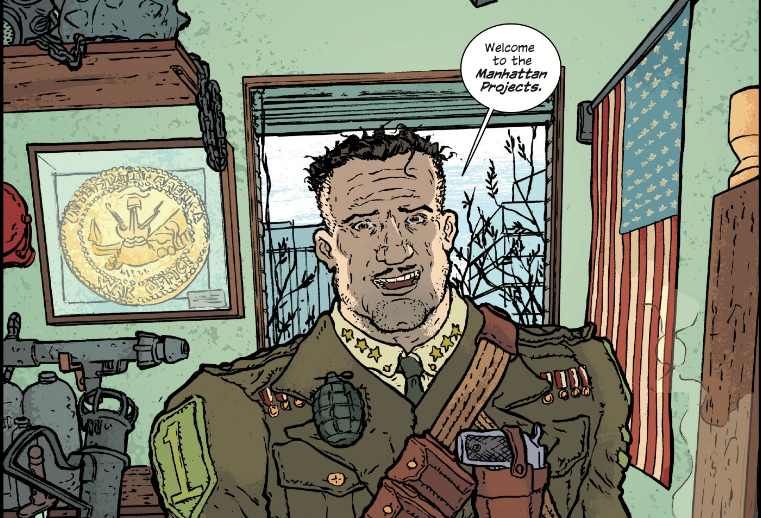
Deception-land: The Manhattan Projects
Last week we explored the major themes in Jonathan Hickman’s East of West. This week we continue with another Hickman series, The Manhattan Projects, and this time the main theme is deception. Hickman does also include his usual themes of hubris, love, and family relationships (particularly the paternal), but deception is the engine that drives this story. Last week I made the superficial comparison between East of West and The Manhattan Projects in that they both deal with alternate histories. The main difference at this level is that the former diverges after the Civil War while the latter diverges during World War II. But that’s where the similarities end. East of West is self-serious and the pencils and colors reflect that seriousness. The Manhattan Projects is, in a way, dark slapstick and the caricature pencils that mirror some of the Underground Comix looks of the 70s and 80s along with a light palette reflects the comedy. Nick Pitarra, on pencil and ink duties, does a wonderful job setting the tone with all the little details in his work. Last week, I compared East of West to Kill Bill. The Manhattan Projects is like Stanley Kubrick’s Dr Strangelove. In fact, the comparison is spot on (including an ex-Nazi with a mechanical arm) - if you liked the tone of Dr Strangelove you’ll enjoy The Manhattan Projects. (And in issue #20 there’s a reference to Kubrick’s 2001: A Space Odyssey) In the first scene General Leslie Grove’s office is littered with weapons everywhere. His desk even has bullet holes and he wears a grenade on his chest